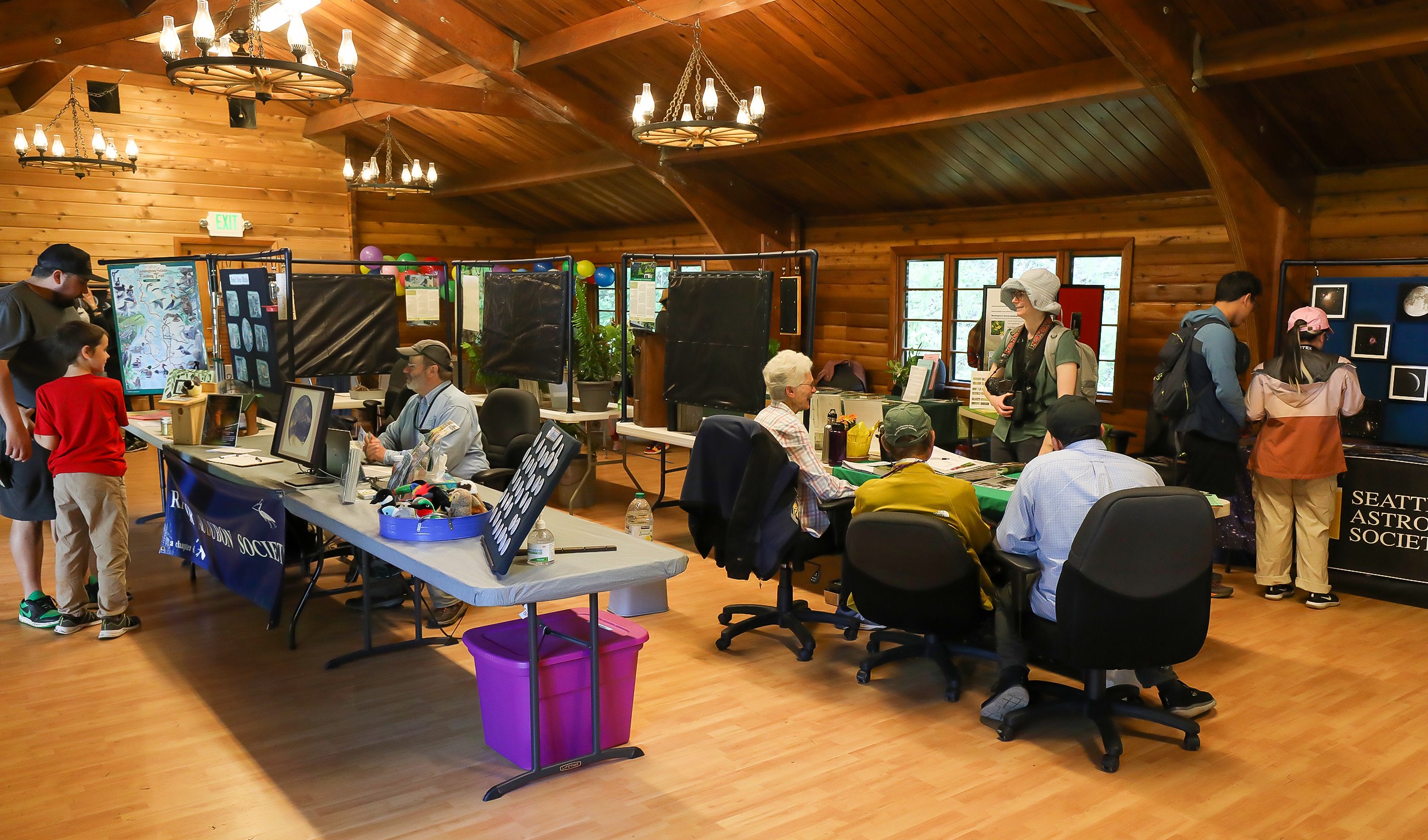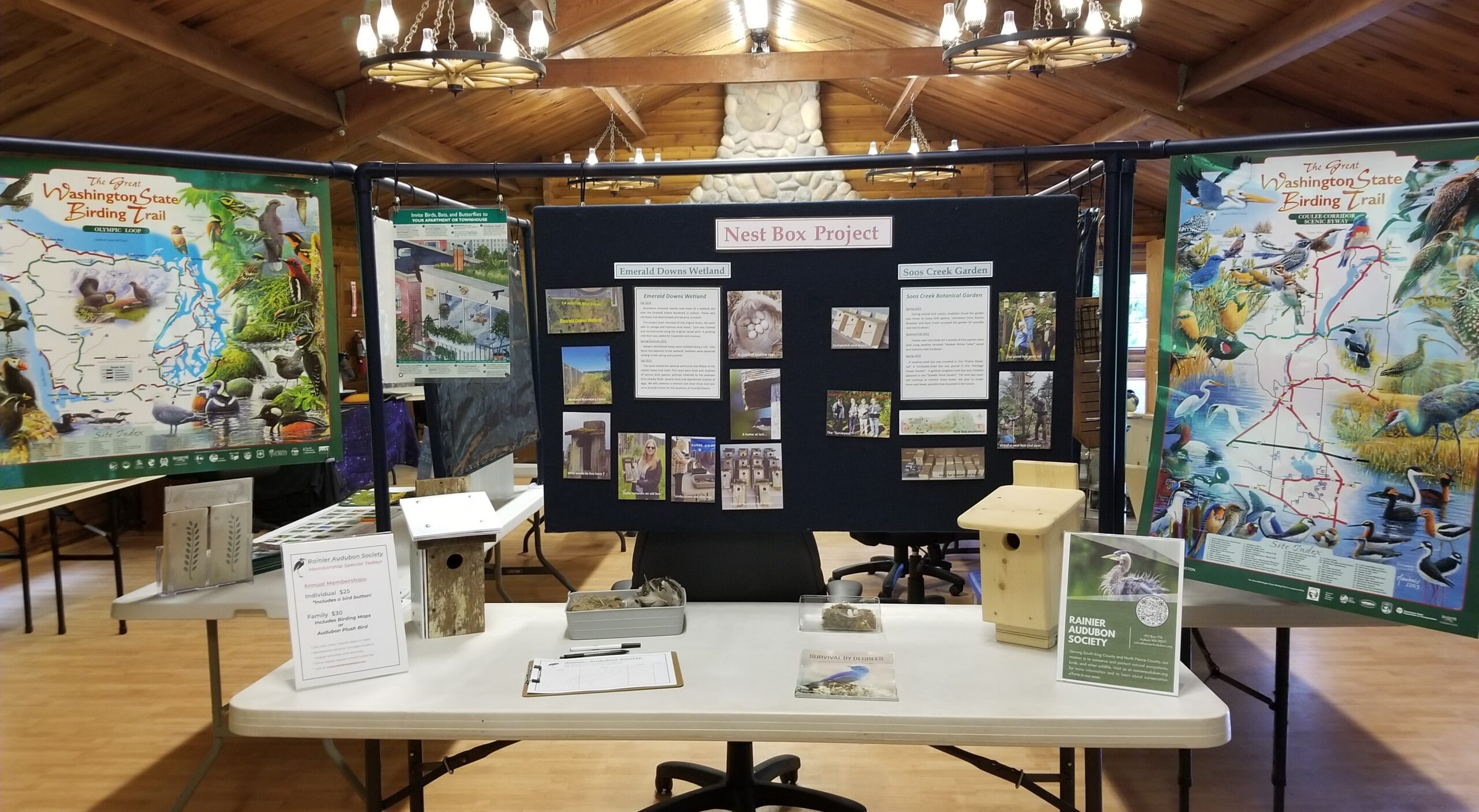
The Nature Journal Connection
By Cindy Flanagan
Take a minute. Think about the King County region and tell me if you know of or have set foot in any protected old growth forests. There are two that come to mind for me—
Federation Forest near Enumclaw and Seward Park’s 120-acre Magnificent Forest in Seattle. The Magnificent Forest is a relatively young old growth forest, with trees being about 200 years old. It is definitely a gem in a heavily urbanized place.
At the end of September, I was invited by friends to go on a walk in the trails of the Magnificent Forest with Seward Park Audubon’s Naturalist Ed Dominguez. I must admit, I did not know a lot about the natural history of the park and sharing in many of the forest wonders with Ed was thought provoking.
We walked through a good mix of trees—the most common seemed to be Douglas Fir and a good representation of Western Red Cedar, Big Leaf Maple, Madrona, and even Western Hemlock. For each tree, Ed had some interesting stories and what stood out were the rich interconnections of the trees, the fungi, and the wildlife.
One of the discussions we had was about the different types of fungi and the different roles they play in the forest ecosystem as decomposers and nutrient cyclers breaking down organic matter and contributing to soil health in the forest and as a food source for wildlife and humans. Of interest were tiers of Oyster Mushrooms that were popping out on a dying Red Alder. Red Alder trees (snags and dying trees) are a hot landing spot for Oyster Mushrooms.
One of the mighty Douglas fir trees had a huge outgrowth that looked like a gall. Upon closer inspection, we noticed there were bone fragments and bits of hair. Too low to be a post of a Cooper’s Hawk or Sharp-shinned Hawk, our next guess, which was confirmed by Ed, was owl pellets. Turns out there is a Great Horned Owl that drops its pellets from above and they land on this outgrowth! I will remember not to use that outgrowth for a sit spot!
As we walked, we could hear drumming of the Pileated Woodpecker. Drumming is a display mechanism. Ed used the opportunity to talk about a phenomenon called Autumnal Recrudescence which can cause birds to display and sing in the fall. This occurs when the daylight hours match those of spring, which sets off a hormonal surge in some of our feathered fellows for a short period of time in the fall, despite not mating. Not only had I heard the Pileated drumming, but I had also heard the chirp of the male Anna’s Hummingbird in its display dive when it fans its tail, and the vibration creates a single syllable chirp. A book that explains autumnal recrudescence, and other bird biology topics and ecology is The Birder’s Handbook by Paul Ehrlich, David Dobkin, and Darryl Wheye. And for the poetic crowd, here is the poem that Ed recited about Autumnal Recrudescence by Susan Styles, written in 1973.
The Autumnal Recrudescence of the Amatory Urge
When the birds are cacophonic in the trees and on the verge
Of the fields in mid-October when the cold is like a scourge.
It is not delight in winter that makes feathered voices surge,
But autumnal recrudescence of the amatory urge.
When the frost is on the pumpkin and when leaf and branch diverge,
Birds with hormones reawakened sing a paean, not a dirge.
What’s the reason for their warbling?
Why on earth this late-year splurge?
The autumnal recrudescence of the amatory urge.
If I were to leave this amazing day just as a memory, it surely would fade with many others. However, I chose to take 30 minutes to jot down some of these memories in my nature journal. The focus is not to create a perfect picture, but rather to capture a moment of observed time in nature and add notes about questions I have about the flora and fauna and the ecosystem in which they live. What I love is that I can come back to this day by browsing my journal and be reminded of the Oyster mushrooms and know that around that date I should start looking at the Red Alder snags to see the growth action of these gilled bivalve-esque beauties. It might help me remember to pay attention to the equal daylight days of spring and fall and listen for amatory songs. Nature journaling is a powerful tool to increase your observations and deepen your connection to nature. Here is my page—you will note, there is no colour and not everything is completed, and it isn’t a field guide of polished pictures. It is a captured moment of inquiry and observation.

If you think you would like to give Nature Journaling a try, come to one of our in-person or
online outings. Here are the details:
Our nature journaling group is a gathering of people who are curious about nature and want to be ‘wow-ed’ by wonder and capture these moments on paper. Each month we explore some kind of phenomena of nearby nature and figure out how to capture it in our journals using words, pictures, and numbers. We share in our joy, our discoveries, and our ideas. The goal of our time together is to have fun with others, get more connected to nature, and figure out how we can be better stewards of our environment.
We meet online monthly via Zoom from October to May.
Online Dates for 2024-25
Each month we explore a topic—usually a local plant or animal and its habitat. We explore different ways of capturing our wonder on paper.
Sundays 3:00-5:00 PM
October 20th
November 17th
December 15th
*January 26th (moved to the 4th week in lieu of MLK weekend)
February 16th
March 16th
*April 27th (moved to 4th week in lieu of Easter weekend)
May 18th
Our Zoom link is the same link each month.
https://us06web.zoom.us/j/81031877091?pwd=TEpwcDZ4TDVhaFIxMWlUbnVrbEhzdz
09
In-person Nature Journaling Outings
These outings are informal gatherings. We will gather in an area and people can explore together or individually. The last 30 minutes of our session, we will come together and share our experiences. Minors (under 18 years of age) must be accompanied by an adult.
What to bring: Whatever you want to use to record information:
• a pencil/pen, some paper and a clipboard or a journal,
• colour such as watercolor or colored pencils (optional)
• something to sit on if you need, like a thermal foam pad or a portable seat
(optional)
Saturdays, Time 9-11am
October 19th–Cedar River Salmon at Renton Library
November 16th–Saltwater State Park
April 26th–Auburn Westhill Watershed Forest
May 17th–Flaming Geyser State Park
To register for in-person outings, please email Cindy at
cindy.flanagan.nature.studio@gmail.com



